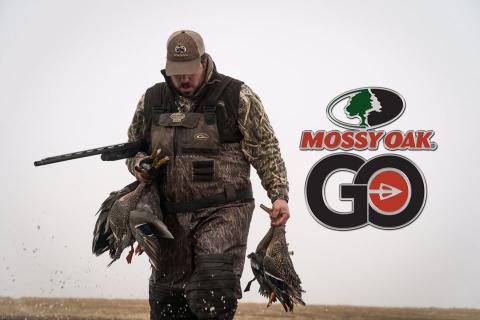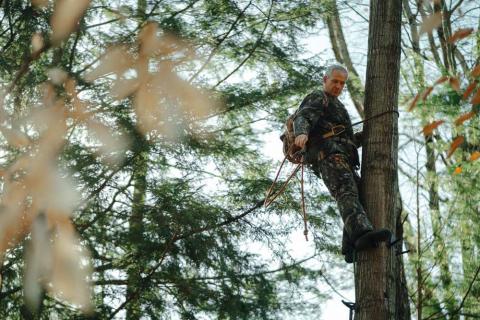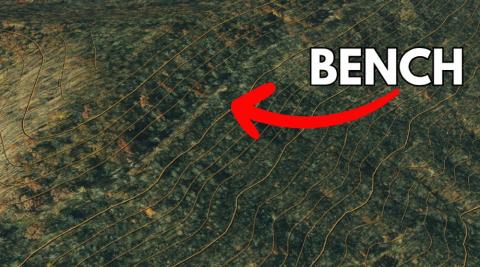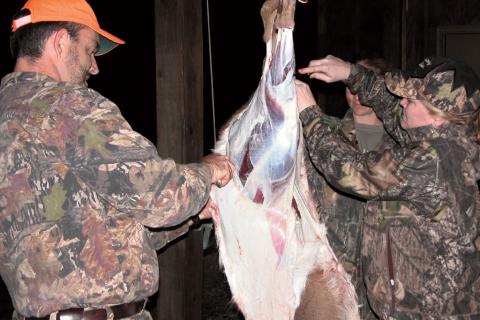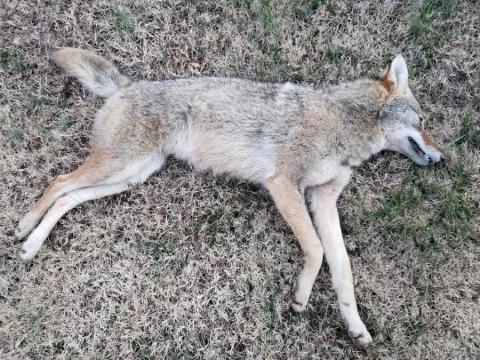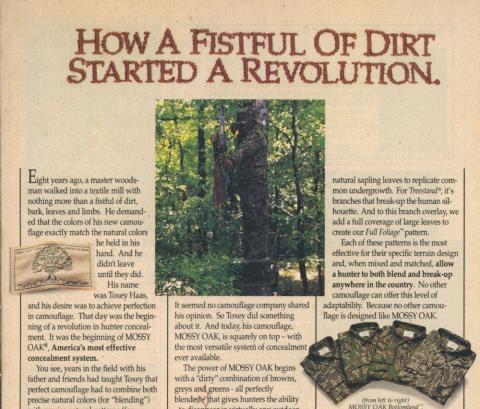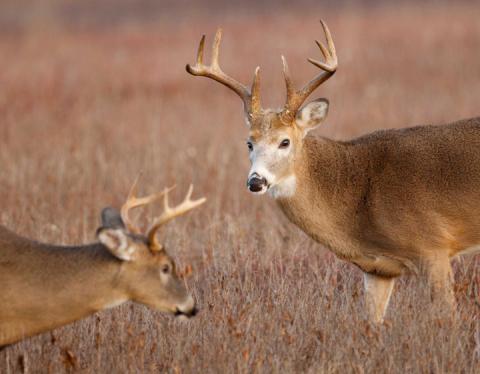Todd Amenrud | Originally published in GameKeepers: Farming for Wildlife Magazine
Position and design are possibly the most important details in the makeup of a good hunting plot, at least one that consistently produces results. Where is the plot in conjunction with where the deer are bedding and will they feel comfortable about accessing the spot during legal shooting light? Obviously you must also have an attractive crop growing in the plot and you should not pressure the site by “over-hunting” it. If location is a given and we’re all talking about an “un-pressured plot,” there are several ideas you can implement to any harvest plot that will increase your odds for success.
Keeping Your Hunting Plot Out of Sight
Let’s say that you have a pristine plot that hasn’t been hunted all season long and the deer are piling into it. We’ll say that the “attraction power” of your plot is at 100%. OK, now you hunt the plot…maybe you’d like to kill a doe, or check it out to see the potential for the up-coming rut. Sundown comes and you haven’t killed anything and you get down out of your treestand while there are deer still in the plot. The deer detect you! In one fell-swoop you have just brought that “attraction power” down to 50%. If you kill a doe in the plot and need to deal with field dressing and chores associated with the kill you bring it down even further. Be sneaky and strike when the time is right!
For the purpose of the article we’re just assuming that you are only going to hunt the site when the conditions are in your favor, although most of you don’t even though you’ll say you do. Regardless, you must try to be stealth. You can have the hottest plot in the county, but if you alert the deer to the “dude in the treestand” it’s not going to happen. Create screens to aid in stand approach and getting out of the area without being detected. Planting tall native warm season grasses or annual grasses like corn or Egyptian wheat can create fast visual barriers whitetails can’t see through. If it’s an ambush site that you’ll have for years you can even plant conifer trees or fast growing bushes. Make yourself a “hedgerow type” concealed path to get to your site.
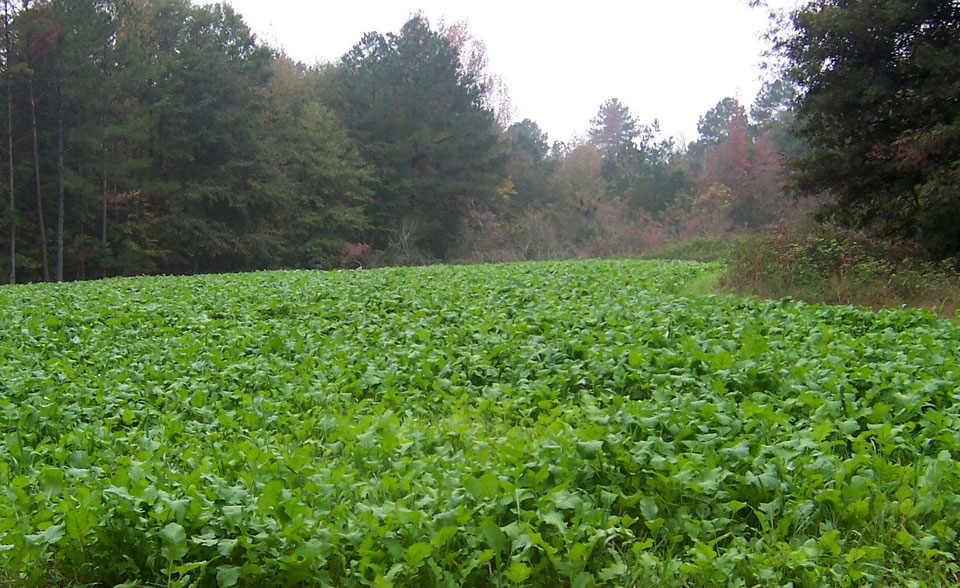
Oftentimes keeping your set-ups just off of the plot’s edge will produce better results, especially for mature bucks. Even just 10 to 20 yards off of the plot can make the world of difference in how much pressure you apply each time you hunt. Observably every situation is different, but if you wish to hunt the same plot often during the season I would highly recommend placing your treestand off of the plot’s edge.
If you’ve been using your trail cameras maybe you have an idea of the trail or corridor the buck is using to get to the plot. Create your ambush site closer to their bedding area. Your chances for a shot during legal shooting light are much greater there and your chances of buggaring your plot much less if you’re hunting 100 yards or more off of the plot.
Stand approach and site exit are extremely important if you wish to keep the plot “fresh.” Again, mask your travel however possible. A friend dropping you off at the stand site and then picking you up at dark will be much less intrusive than walking in and out and bumping deer while on foot. Let the ATV or truck be the instrument that does the “bumping.” That way when the ATV leaves there’s the assumption all danger is gone with it. We’ve watched many times as deer pile back into a plot immediately after the ATV passes or leaves.
Licking Branches
As soon as bucks develop hard antler they will start to make rubs and scrapes. Visiting the scrapes around the edge of your food plots are often the first thing a buck will do when he gets to a plot. The “origin” of a scrape is not on the ground at all, but instead several feet above at the overhanging “interaction branch,” often called the “licking branch.” This visual and scent marked stimuli will be found over almost every scrape made. When a buck works-over a scrape he will usually interact with the “licking branch” first by rubbing his forehead and preorbital glands on it while also chewing and/or licking the branch (hence its name).
My brother-in-law taught me this trick a few years ago and I’ve written about it before in this magazine…but it works. He had a couple mature bucks showing up to one of his hunting plots almost every afternoon. The edge of the plot was riddled with scrapes and two times he was forced to watch good bucks work-over scrape after scrape, but never one within range of his treestand. He thought enough was enough and sawed off the licking branches from all the scrapes out of range and left the ones closest to his treestand. He killed one of the bucks the next day while it chewed on a licking branch 10 yards from his tree. The buck instinctually walked directly to one of the only scrapes left with a licking branch.
Since then we have used this trick numerous times. In fact, we will sometimes saw the licking branch off of one tree and move it to a tree within range that doesn’t have one. Just wedge it between other branches, nail it to the tree or use a couple cable ties to secure it at the correct height (5-6 feet high).
In addition to rigging a licking branch in a spot that favors my stand location sometimes I also like to use Magnum Scrape Drippers and make a mock scrape if there isn’t an existing scrape present. If there isn’t one where you need it… make your own! Sometimes I’ll use more than one dripper and create a cluster of fake scrapes, using Active Scrape or Trail’s End #307 in the drippers. These drippers disperse scent during daytime hours so it conditions bucks to show up early and hang around longer if they wish to experience the peak of the aroma.
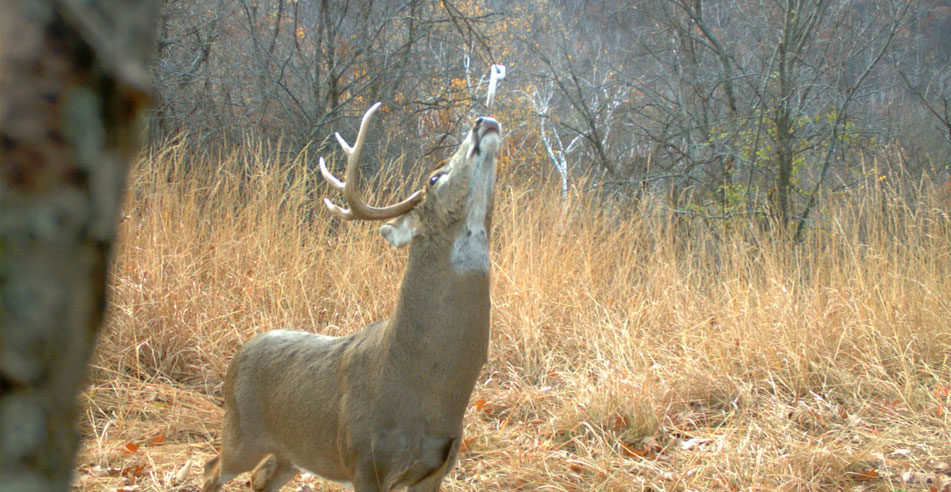
This scrape technique has to be timed right. In the Upper Midwest we have the best luck from the second week of October into the first few days in November and then again from late November into the first week in December. I would suspect that in the south you would move these dates back a few weeks to as far as maybe even a few months in the Deep South. Basically it works well prior to the chase phase and then again after the peak of breeding.
When the Suspicious Believe They’re Safe
Having security cover nearby is extremely important if you wish to coerce whitetails into a food plot before the sun goes down. This is especially important if you want mature bucks to show up regularly. Using ecotones to buffer a food plot and give mature bucks a feeling of safety when entering the plot will pay big dividends.
Mark Thomas has produced some great work regarding the payoff of using ecotones. He has planted strips of WhistleBack around the outside edge of a plot. Not only has this improved the quail habitat, but deer, including mature bucks, feel more comfortable about entering the plot earlier and hanging around longer. Simply planting a strip of annual grasses like corn, Egyptian wheat, or millet around the plot can be all it takes. Or you can create a more semi-permanent buffer with native warm season grasses like big bluestem, Indian grass or switch grass.
I like to do some chainsaw work around my plots, usually during late winter or early spring. It’s amazing how thick an area can become during one growing season just by letting the sunlight hit the soil. A whitetail is more apt to venture out into the open if he is only a couple hops away from thick cover. Besides planting ecotones like mentioned above, I like to create small thickets adjacent to my plots. Oftentimes all it takes is cutting down a few mature canopy trees to create a small 1/8 to 1/4 acre thicket. All you need to do is saw the trees down; Mother Nature will take care of the rest.
It all depends upon the size and shape of the plot, but I will usually create two to four such areas (small thickets) in different locations around the plot. The simplest set up would be one on each side of the plot, but with large plots it may be best to make several. Besides being security cover, they use these areas to stage in before entering the plot, so they also make great spots to key on when setting up an ambush. By gathering trail camera information and keeping records you can determine which areas/thickets they favor under which conditions so you can develop a plan.
31 Flavors
Hunting plots tend to be smaller than those designated a destination feeding plot. In smaller plots, one acre or less, you don’t have enough acreage to “do it all.” Many managers lose the game by planting crops that aren’t palatable for when they want to hunt the plot.
When asked, “When will you hunt the plot?” Most come back with – “I hunt it all season.” My reply would be, “You simply don’t have enough ground to plant the variety necessary to keep them coming all season… so pick a time.” With small plots, especially those in the big-woods where there is no agriculture around, you must be specific about when you want the attraction to happen and thus what you will plant.
No one, single planting will attract whitetails all the time. You need to familiarize yourself with when, or under what conditions whitetails favor certain foods. Variety is the key to consistent attraction, but with the smaller size of hunting plots you must coordinate your hunting to coincide with when your chosen crops are the most attractive.
Back to the Chainsaw
When you’re doing your woods-work creating the thickets that were mentioned earlier, use the chainsaw to create approach funnels. Just like most animals, whitetails travel from point A to point B on the path of least resistance. If you plan things out properly you can dictate to your herd where they will travel. It depends upon what you have to work with, but I like to restrict access in certain areas and “open the gate” where it gives me the best advantage.
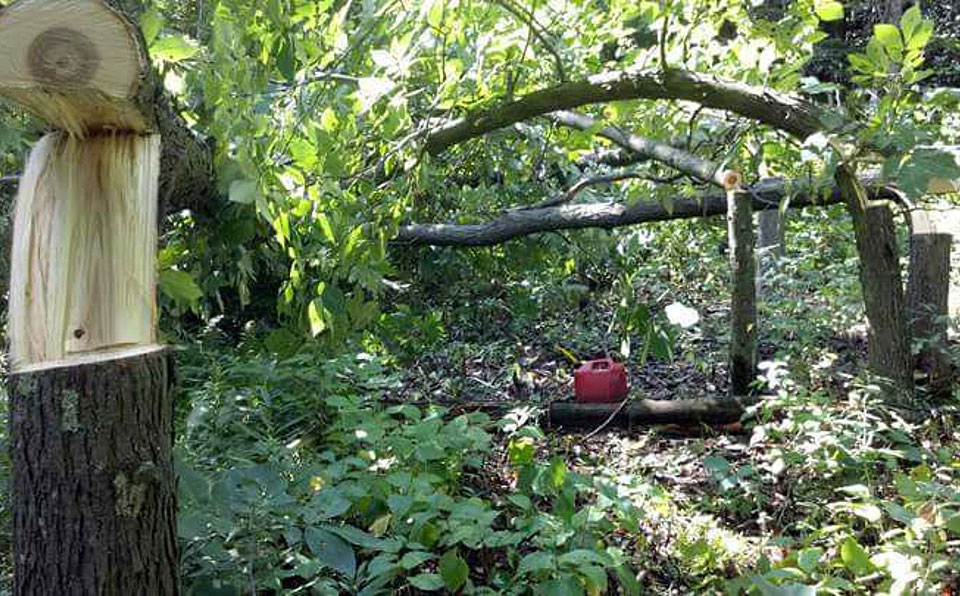
Hinge-cutting trees can create a barrier whitetails won’t cross unless they are forced to. You can take it a step further and remove debris or create a path using a chainsaw, pruner or through tall grass a weed-whacker. Whitetails will take the easiest path they have.
I like to create an “hourglass shape” by hinge-cutting trees and creating a barrier so they use that path instead of the others out of range of my ambush location. I’m not talking about placing a barrier around the entire plot, I’m just suggesting about reducing their options and increasing your odds. Make their easiest access path the one that gives you the best advantage.
Most of these techniques cost very little, some just require a little “elbow grease” or common sense. Some may not be applicable to you because of location or what you have to work with around the site and some may take several years before you really see the full benefit, but they will all help you increase your chances. Having a great hunting plot that consistently produces results for you has more to do with position, pressure and design, but these simple common sense tips should help make any plot more “huntable.”
















